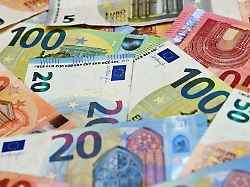10 percent increase for the first time
Inflation in the euro area breaks all records
09/30/2022, 12:18 p.m
While unemployment in the eurozone remains at historically low levels, inflation is reaching unprecedented levels. The ECB will have its hands full to push through the target inflation of two percent – currently it is in the double digits.
The already high inflation in the eurozone continues to rise. In September, consumer prices rose by exactly 10 percent year-on-year, according to the Eurostat statistics office in Luxembourg. It is the strongest increase since the euro was introduced as book money in 1999. Analysts had expected an inflation rate of 9.7 percent. In the previous month, consumer prices had risen by 9.1 percent, which was already a record.
Inflation was again driven by the very strong increase in energy prices, which rose by 40.8 percent compared to the same month last year. Food and beverages also increased significantly by 11.8 percent. Industrial goods were 5.6 percent more expensive than a year earlier, and 4.3 percent more had to be paid for services. Core inflation excluding energy, food and beverages increased from 4.3 to 4.8 percent.
The three Baltic states again had the highest inflation rates in the currency area at more than 20 percent. Consumer prices rose by 24.2 percent in Estonia, 22.5 percent in Lithuania and 22.4 percent in Latvia. In Germany, the inflation rate calculated according to European standards was 10.9 percent.
Highest unemployment in Spain
The European Central Bank (ECB) is aiming for a much lower inflation rate of two percent in the medium term. After hesitating for a long time, the ECB is already fighting the high inflation with higher interest rates. Further significant interest rate hikes are expected in the coming months.
Meanwhile, unemployment in the eurozone remains at historically low levels. In August, the rate remained unchanged at 6.6 percent. The proportion has never been lower since the introduction of the euro. In August 2021, the rate was 7.5 percent. At that time, the economy was burdened by the Corona measures. According to the statistics office, 10.97 million people were unemployed in the euro zone in August. That was 30,000 fewer than in the same month last year.
Of the 19 countries in the euro zone, Spain has the highest unemployment rate of 12.4 percent. In Germany it is the lowest at 3 percent. Eurostat’s labor market data are based on indicators from the International Labor Organisation. The rate for Germany is therefore significantly lower than that reported by the Federal Employment Agency.
